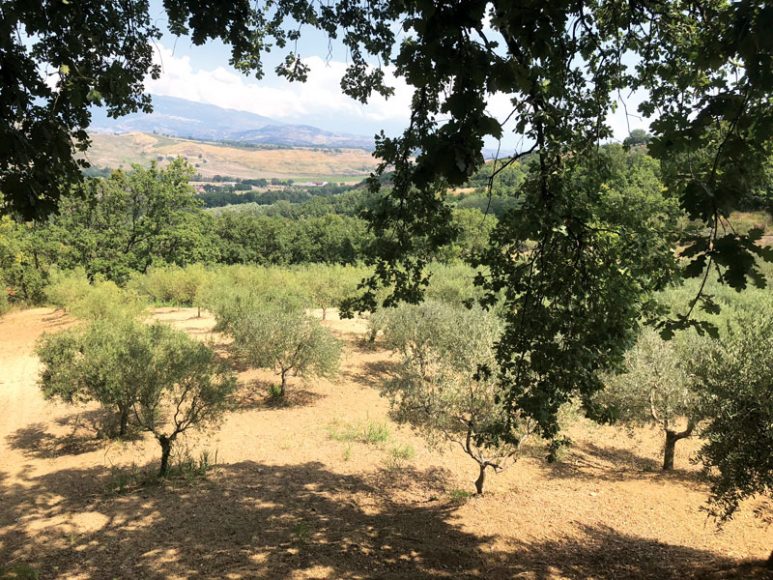Ask Val Morano Sagliocco — director of Morano Landscape Garden Design in Mamaroneck; president of Weaver Gardens in Larchmont and Ridgeway Garden Center in White Plains; and managing partner of Lago restaurant in West Harrison — about the current olive oil crisis and he doesn’t mince words.
“Oh my God, it’s a catastrophic nightmare,” he says of the situation in which Italy was scheduled to run out of its homegrown product by last month. “And it’s a global problem,” adds Sagliocco, who introduced his own brand — Oliveto Morano, a crisp, nutty oil produced on the family’s estate in Calabria — to Lago patrons last month.
Olive oil production, which dates from 6500 B.C. in what is now Haifa, Israel, has long been a cyclical business in the Mediterranean basin, with some years yielding greater crops than others in the top producers — in order, Spain, Italy and Greece, with Morocco and Turkey alternating places at numbers four and five. But the recent sharp decline in Italian production is not about the cyclical narrative.
What’s at work here? Curtis Cord — founding publisher of Olive Oil Times and subject of a WAG profile last August — told National Public Radio in March that the bacterium xylella fastidiosa has destroyed more than 4 million trees on a half-million acres over the last seven years in Puglia — Italy’s prime
olive oil-producing region in the high heel of the Italian boot. Add to this an early deep freeze and freak rains last year that wreaked havoc with many olive trees, which generally cannot survive below 10 degrees Fahrenheit. But Sagliocco thinks that bacteria and pests like the olive fly that has adversely affected the quality of Greece’s oil are not on parallel tracks with changes in weather patterns. Rather, it’s a case of cause and effect, he says — “Erratic weather forces problems with bacteria and insects.”
In any event, the combination of mercurial weather and infestations has spurred a 57 percent decline in the Italian olive harvest to 185,000 tons, the country’s worst in a quarter-century. Coldiretti, the Italian farmers’ organization, estimates a loss of $1.1 billion as a result of that precipitous drop.
Elsewhere, the olive oil picture has been a mixed bag, with Greece and Portugal also suffering production declines of 35 and 20 percent, respectively. An early thaw followed by a cold snap in California saw the olive harvest decline 25 to 50 percent with a 30 percent drop in oil yield. But cold and heat proved an effective mix in Spain, which has more modern, drought-resistant groves than Italy and Greece and where a bumper crop will see olive oil production increase 25 percent. So Italians will be doing the unthinkable — importing Spanish oil.
Meanwhile, Sagliocco says that his estate in Calabria, the toe of the Italian boot, has not been affected by bacteria, pests or bad weather. There, amid more than 2,500 olive trees on 35 acres of groves, he has produced 20,000 liters of olive oil in three years. Now it’s just a waiting game, he says, to see what the fall harvest will bring.
Oliveto Morano will be available for purchase by midsummer at olivetomorano.com.





